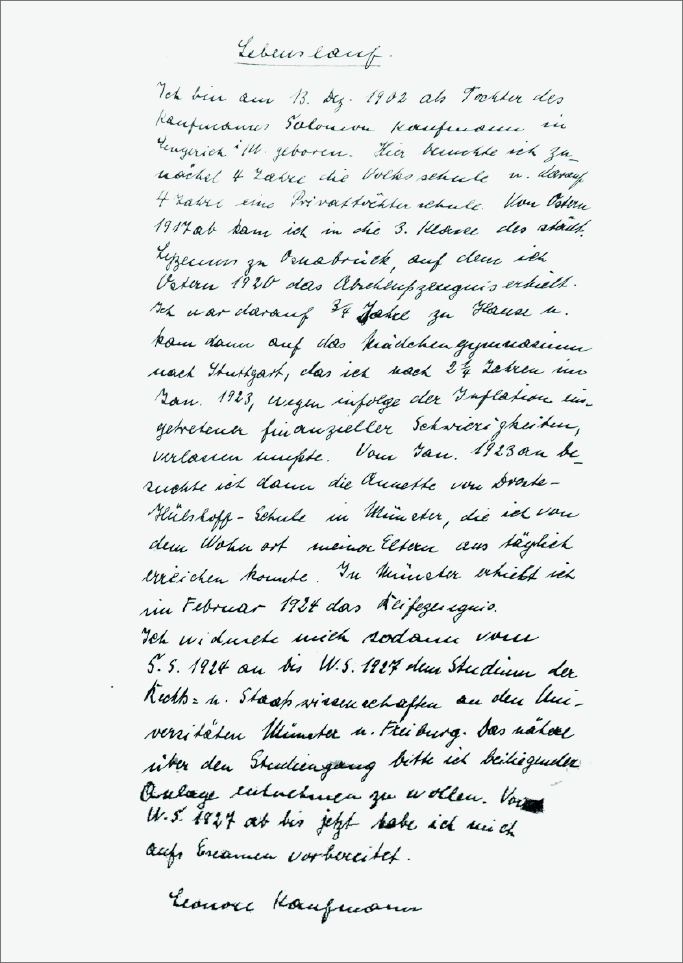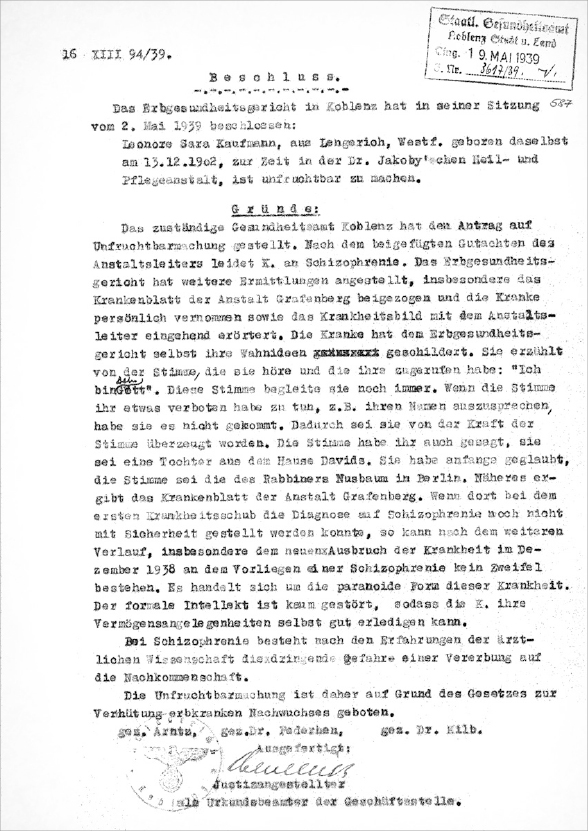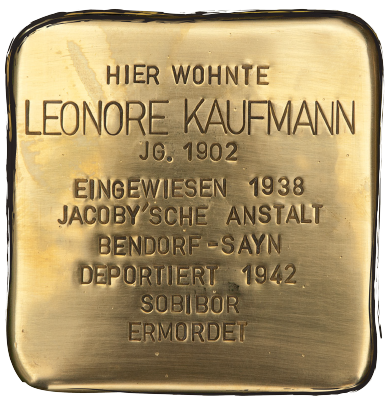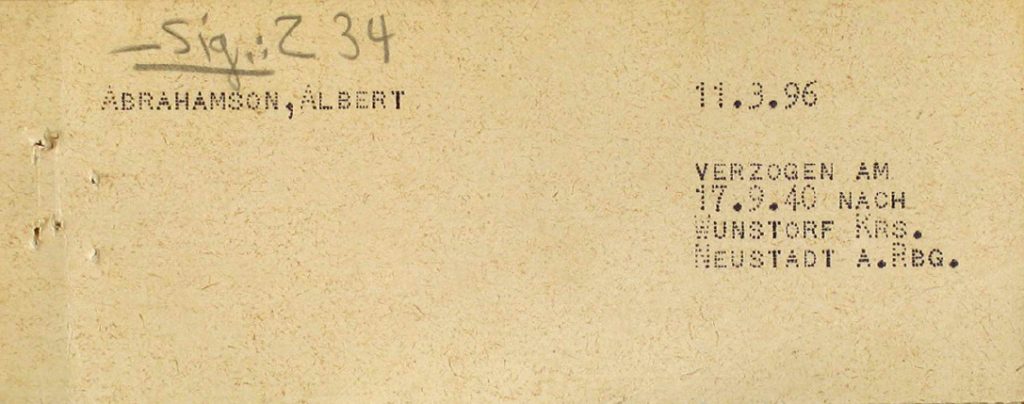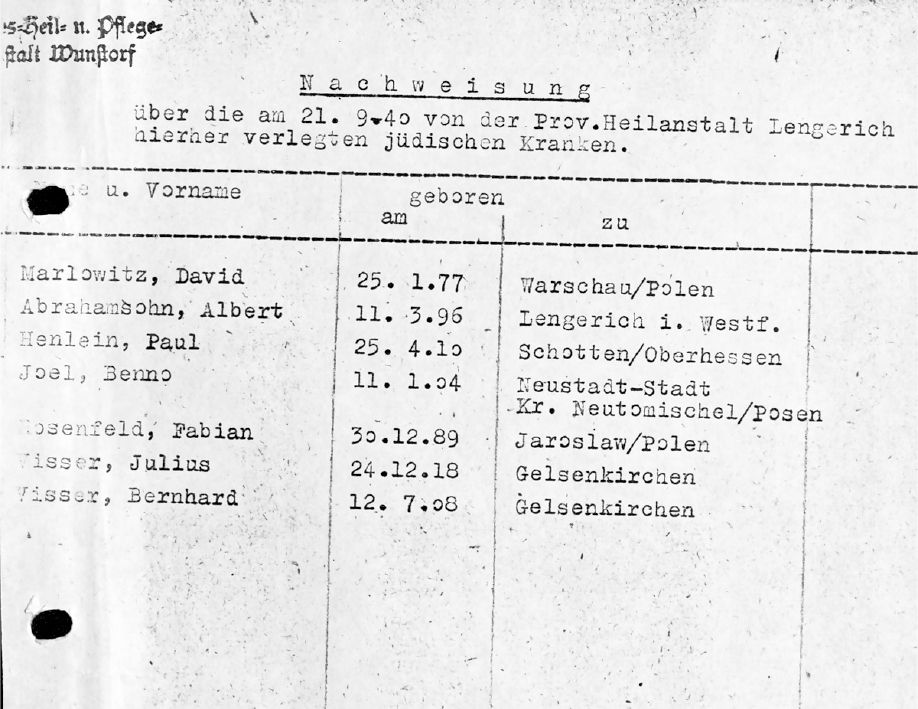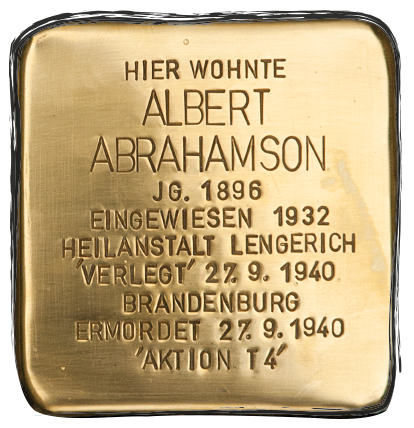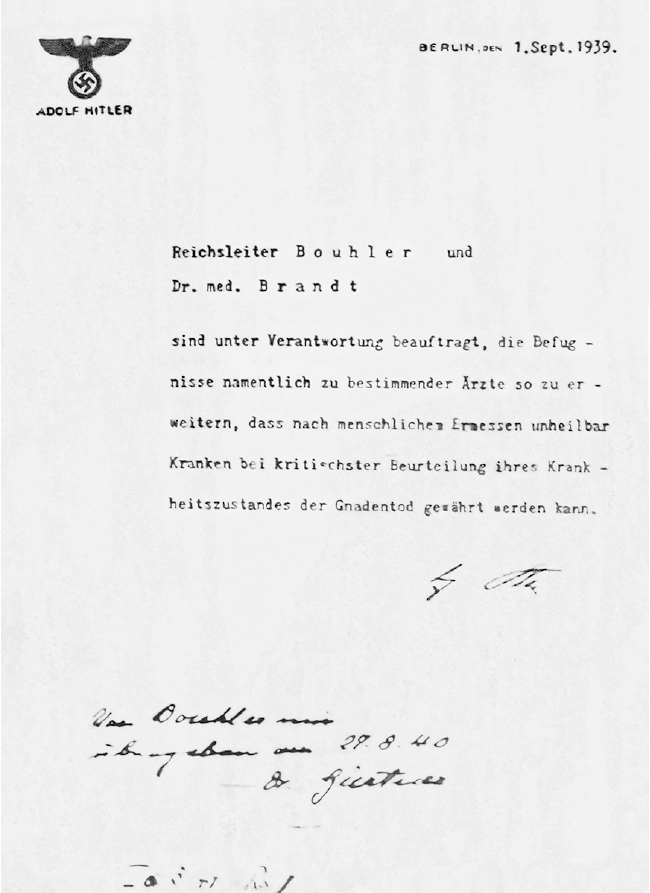Continue
here
Stolpersteine Lengerich
Researching the lives of fellow citizens Leonore Kaufmann and Albert Abrahamson from Lengerich provides insights into the harrowing details of their lives and how they were murdered.
Life of
Leonore
Kaufmann
Born in Lengerich/Westphalia
on 13 December 1902
School
1909
Elementary school, then private girls’ school
1917
Municipal Lyceum, Osnabrück
1921
Girls’ grammar school, Stuttgart
1924
Annette von Droste-Hülshoff School, Münster, with school-leaving certificate
Legal studies / Civil Service
1924
Study of law in Münster and Freiburg
12 July 1929
First state examination in law, until
29 December 1929
Traineeship at the public prosecutor’s office, Hamm
1930 to 1931
Local and regional court, Münster, until
29 March 1932
Higher regional court, Hamm, until
12 May 1933
Training with judicial council Cohn in Münster
31 May 1933
Forced to forego second state examination
4 September 1933
As a Jew, dismissed from the civil service in line with the “Gesetz zur Wiederherstellung des Berufsbeamtentums” (Law for the Restoration of the Civil Service)
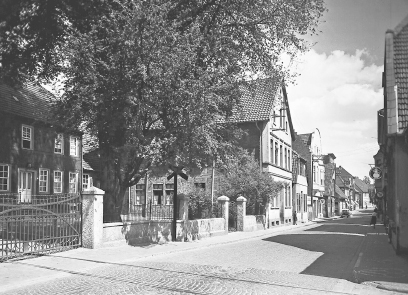
Parental home at Bahnhofstraße 17; collection, Fotohaus Kiepker
Resume
(Transcription of the handwritten resume) I was born on 13 Dec. 1902 to the businessman Salomon Kaufmann in Lengerich/Westphalia, where first I attended 4 years of elementary school and then 4 years at a private girls’ school. In Easter 1917, I joined the third class of the municipal lyceum in Osnabrück, where I obtained my school-leaving certificate in Easter 1920.
I then spent ¾ of a year at home, before going to a girls’ grammar school in Stuttgart, which I had to leave after 2¼ years in January 1923 due to financial difficulties caused by inflation. From January 1923, I attended the Annette von Droste-Hülshoff School in Münster, which I could reach daily from my parents’ home. I obtained my school-leaving certificate In Münster in February 1924.
I then devoted myself to the study of law and political science at the universities of Münster and Freiburg from the summer term of 1924 until the winter term of 1927. For more details about the course of studies there, please see the enclosed document. Since the winter term of 1927, I have been preparing for my exams.
Leonore Kaufmann
Letter from Leonore Kaufmann
to her brother, read by Marlene Alich,
pupil at the Hannah Arendt grammar
school, Lengerich
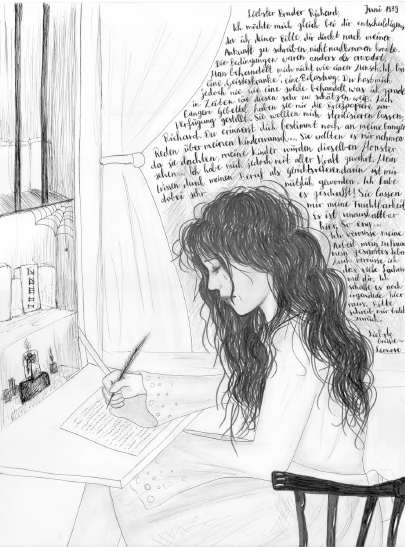
Fictional letter of Leonore from the sanatorium and nursing home in Bendorf-Sayn. Drawing and text: Marlene Alich, pupil at the Hannah Arendt grammar school, Lengerich, 2020
Precarious work and illness
1936–1938
Lady’s help in Werther, and later in Berlin
May 1938
Sanatorium and nursing home, Düsseldorf-Grafenberg; moves to brother Richard in Saarbrücken in autumn 1938
26 December 1938
Sanatorium and nursing home, Bendorf-Sayn
15 March 1939
Dr. Jacoby diagnoses schizophrenia
2 May 1939
Koblenz Hereditary Health Court decides on forced sterilization; Leonore lodges an objection
29 August 1939
Decision of the Koblenz Hereditary Health Court: forced sterilization is suspended Zwangssterilisation wird ausgesetzt
Resume
(Transcription of the patient’s file)
16 XIII 94/39. Decision. The Hereditary Health Court in Koblenz decided in its session of 2 May 1939: Leonore Sara Kaufmann, from Lengerich, Westphalia, born there on 13.12.1902, at present in Dr. Jacoby’s sanatorium and nursing home, is to be sterilized. Reasons: the health authority responsible in Koblenz has filed the application for sterilization. According to the expert opinion attached provided by the head of the institution, K. suffers from schizophrenia. The Hereditary Health Court made further inquiries, in particular consulting the medical records of the Grafenberg asylum and hearing the patient in person, as well as discussing the clinical picture in detail with the head of the institution. The patient herself described her delusions to the Hereditary Health Court. She tells of the voice that she hears and that has called out to her: “I am your God”. This voice still accompanies her. When the voice forbade her to do something, e.g. to say her name, she could not do it. This convinced her of the power of the voice. The voice also told her that she was a daughter of the house of David. At first she thought that the voice was that of Rabbi Nusbaum in Berlin. More details can be found in the hospital records of the Grafenberg asylum. If the diagnosis of schizophrenia could not be made with certainty during the first episode of the illness, there can be no doubt about the presence of schizophrenia after the further course of the illness, especially the new outbreak in December 1938. It is the paranoid form of this illness. The formal intellect is barely disturbed, so that K. can manage her property affairs well herself. In the experience of medical science, there is an acute danger in schizophrenia of passing the illness on to the offspring. Sterilization is therefore required according to the Law for the Prevention of Offspring with Hereditary Diseases.
Signed Arntz, signed Dr. Federhen, signed Dr. Kilb
“A person is only forgotten when the name is forgotten”.
[Talmud]
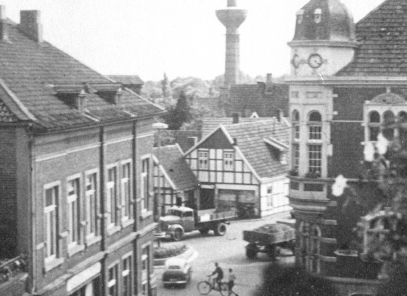
Life of
Albert
Abrahamson
Born in Lengerich/Westphalia
on 11 March 1896
School and education Not yet known
Not yet known
26 May 1917
First World War, “slight wounds”
Illness
15 June 1932
Confinement in provincial sanatorium, Lengerich
Deportation and murder
17 September 1940
Transferred from Lengerich to the Wunstorf sanatorium and nursing home as part of Action T4 (the so-called “euthanasia programme”)21 September 1940
Wunstorf sanatorium and nursing home, then deportation to Berlin-Buch sanatorium and nursing home (collection point for Jewish patients)27 September 1940
Albert murdered in the T4 Brandenburg Euthanasia Centre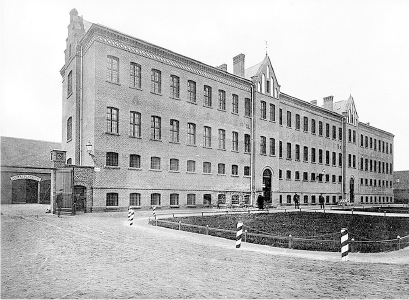
Method of murder
The patients are murdered immediately after their arrival in Brandenburg. Separated by gender, they have to undress. Then they are given a mark on the chest. Their personal details are checked. Finally, they are presented to a doctor, who invents a natural cause of death for the death certificate, photographed, and then taken to the gas chamber. A doctor feeds carbon monoxide into the room and watches the killing through a small window. After the killing is completed, SA or SS men remove the gold teeth from the corpses, and take the bodies to the incinerators.From: 1940 T4-Brandenburg Euthanasia Centre, memorial to victims of euthanasia, SBG Website: www.brandenburg-euthanasie-sbg.de / accessed: 12 October 2020
Hitler’s order from October 1939 on the “euthanasia” programme (backdated to 1 September 1939), with a handwritten note by Reich Justice Minister Gürtner. Philipp Bouhler was SS-Obergruppenführer and Chief of the Chancellery of the Führer (KdF).
Cessation of Action T4
Joseph Goebbels’ diary, 31 January 1941:
“Discussed with Bouhler question of tacit liquidation of mentally ill. 40,000 are gone, 60,000 still to go. This is hard but also necessary work. And it must be done now. Bouhler is the right man to do it”.
Quoted from: Ralph Georg Reuth: Joseph Goebbels – Diaries, Volume 4, Munich 1998
Idea and text: Klaus Adam, Bernd Hammerschmidt
Photos and sources: Fotohaus Kiepker; North Rhine-Westphalia state archives, Münster; Marlene Alich, Hannah Arendt grammar school; Lengerich municipal archives; LWL archives; Brandenburg an der Havel memorials; memorial to the victims of the euthanasia programme, SBG website: www.brandenburg-euthanasie-sbg.de; Joseph Goebbels – Diaries, Volume 4, Munich 1998; Wikipedia; Hitler’s order – in the public domain, Wikipedia Creative Commons CC0 Licence
